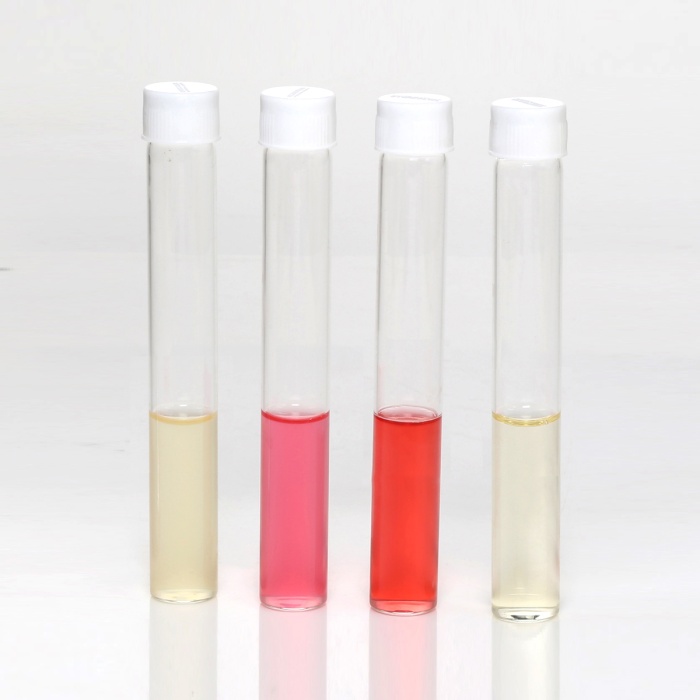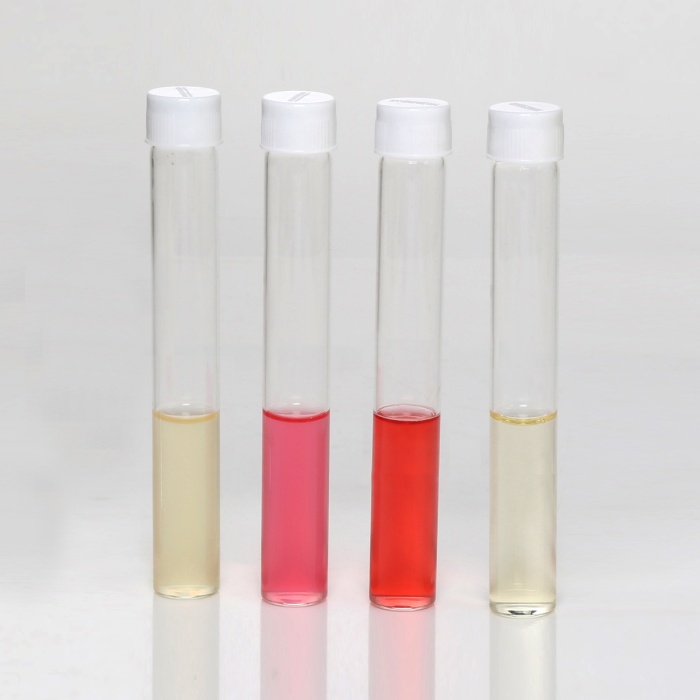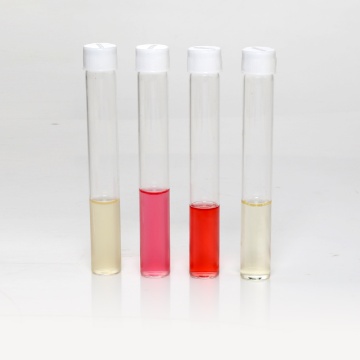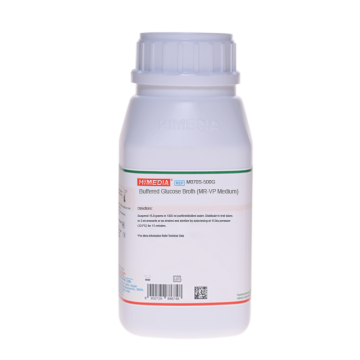 Your enquiry has been submitted
Your enquiry has been submitted
Voges Proskauer Medium, Modified
Intended Use
Recommended for performance of the Voges- Proskauer test in differentiation of Bacillus cereus in accordance with FDA BAM 1998.
Composition**
| Ingredients | Gms / Litre |
|---|---|
| Proteose peptone | 7.000 |
| Dextrose (Glucose) | 5.000 |
| Sodium chloride | 5.000 |
Final pH (at 25°C): 6.5±0.2
**Formula adjusted, standardized to suit performance parameters
Directions
Suspend 17 grams in 1000 ml of purified / distilled water. Heat if necessary to dissolve the medium completely. Distribute in test tubes in 10 ml amounts and sterilize by autoclaving at 15 lbs pressure (121°C) for 10 minutes. Cool to 45-50°C.
Principle And Interpretation
Voges Proskauer Medium, Modified is recommended for the performance of the Voges- Proskauer test in differentiation of Bacillus cereus in accordance with FDA BAM, 1998. Methyl Red and Voges-Proskauer tests are among the two various tests used in the biochemical identification of bacterial species. These tests were originally studied by Voges and Proskauer (6) and subsequently by Clark and Lubs (1) to differentiate between members of the coli- aerogens group. Both the tests are based on the detection of specific breakdown products of carbohydrate metabolism. In MR-VP Broth, after 18-24 hours of incubation, fermentation produces acidic metabolic byproducts. MR-negative organisms further metabolize the initial fermentation products by decarboxylation to produce neutral acetyl methylcarbinol (acetoin), which results in decreased acidity in the medium and raises the pH towards neutrality (pH 6.0 or above) (4). In the presence of atmospheric oxygen and alkali, the neutral end products, acetoin and 2, 3-butanediol, are oxidized to diacetyl, which react with creatine to produce a red colour.
Inoculate 5 ml medium with 3 mm loopful of culture and incubate tubes 48 ± 2 h at 35°C. Test for production of acetylmethyl-carbinol by pipetting 1 ml culture into 16 × 125 mm test tube and adding 0.6 ml of 5% alpha-naphthol (RM1392) solution and 0.2 ml 40% potassium hydroxide (RM1015). Shake, and add a few crystals of creatine. Observe results after holding for 1 h at room temperature. Test is positive if pink or violet color develops. Proteose peptone and dextrose provide necessary growth requirements to the medium and sodium chloride maintains the osmotic equilibrium.
Type of specimen
Food samples
Specimen Collection and Handling
For food samples, follow appropriate techniques for sample collection and processing as per guidelines (5).
After use, contaminated materials must be sterilized by autoclaving before discarding.
Warning and Precautions :
Read the label before opening the container. Wear protective gloves/protective clothing/eye protection/ face protection. Follow good microbiological lab practices while handling specimens and culture. Standard precautions as per established guidelines should be followed while handling specimens. Safety guidelines may be referred in individual safety data sheets.
Limitations :
- The MR and VP tests should not be relied upon as the only means of differentiating.
- Also occasionally a known acetoin-positive organism fails to give a positive VP reaction. To overcome this possibility, gently heat the culture containing the VP reagents.
Performance and Evaluation
Performance of the medium is expected when used as per the direction on the label within the expiry period when stored at recommended temperature.
Quality Control
Appearance: Cream to yellow homogeneous free flowing powder
Colour and Clarity of prepared medium: Light yellow coloured clear solution without any precipitate
Reaction: Reaction of 1.7% w/v aqueous solution at 25°C. pH : 6.5±0.2
pH: 6.30-6.70
Cultural Response: Cultural characteristics observed after an incubation at 35°C for 46-50 hours.
| Organism | Inoculum (CFU) | Growth | VP Test |
|---|---|---|---|
| Bacillus cereus ATCC 10876 | 50-100 | luxuriant | positive reaction, eosin pink / red colour within 2-5 minutes |
Storage and Shelf Life
Store between 10-30°C in a tightly closed container and the prepared medium at 20-30°C. Use before expiry date on the label. On opening, product should be properly stored dry, after tightly capping the bottle in order to prevent lump formation due to the hygroscopic nature of the product. Improper storage of the product may lead to lump formation. Store in dry ventilated area protected from extremes of temperature and sources of ignition. Seal the container tightly after use. Product performance is best if used within stated expiry period.
Disposal
User must ensure safe disposal by autoclaving and/or incineration of used or unusable preparations of this product. Follow established laboratory procedures in disposing of infectious materials and material that comes into contact with sample must be decontaminated and disposed of in accordance with current laboratory techniques (2,3).
Reference
- Barry A. L., Bernsohn K. L., Adams A. B., Thrup L. D., Appl. Microbiol., 1970, 20 (6), 866-870.
- Isenberg, H.D. Clinical Microbiology Procedures Handbook 2nd Edition.
- Jorgensen, J.H., Pfaller, M.A., Carroll, K.C., Funke, G., Landry, M.L., Richter, S.S and Warnock., D.W. (2015) Manual of Clinical Microbiology, 11th Edition. Vol. 1.
- MacFaddin J. F., 2000, Biochemical tests for Identification of Medical Bacteria, 3rd Ed., Lippincott, Williams and Wilkins, Baltimore.
- Salfinger Y., and Tortorello M.L., 2015, Compendium of Methods for the Microbiological Examination of Foods, 5th Ed., American Public Health Association, Washington, D.C.
- Voges O. and Proskauer B., 1898, Z. Hyg. Infektionskr., 28:20.
| Product Name | Voges Proskauer Medium, Modified |
|---|---|
| SKU | M070F |
| Product Type | Regular |
| Physical Form | Powder |
| Origin | Animal |
| Packaging type | HDPE |
| References | 1.Voges O. and Proskauer B., 1898, Z. Hyg. Infektionskr., 28:20. 2.Clark W. M. and Lubs H. K., 1915, J. Infect. Dis., 17:160. 3.Barry A. L., Bernsohn K. L., Adams A. B., Thrup L. D., Appl. Microbiol., 1970, 20 (6), 866-870. 4.Branson D., Methods in Clinical Bacteriology, Springerfield, IL: Charles C Thomas, 1972, 32-33. 5.Cowan S. T., Cowan and Stuls Manual for the Identification of Medical Bacteria, 2nd Ed., Cambridge, Cambridge UniversityPress, 1974, 37,48. 6.MacFaddin J. F., 2000, Biochemical tests for Identification of Medical Bacteria, 3rd Ed., Lippincott, Williams and Wilkins,Baltimore. 7.MacFaddin J. F., 1985, Media for Isolation-Cultivation-Identification-Maintenance of Medical Bacteria, Vol. 1, Williamsand Wilkins, Baltimore. 8.Vaughn R. H., Mitchell N. B. and Levine M., 1939, J. Am. Water Works Association, 31:993.9.Ruchhoft C. C., Kallas J. G., Chinn B. and Coulter E. W., 1931, J.Bacteriol., 22 : 125.10.Werkman C. H., 1930, J. Bact., 20: 121. 11.OMeara R. A. Q., 1931, J. Path. Bacteriol., 34 : 401. 12.Levine M., Epstein S. S. and Voughn R. H., 1934, Am. J. Publ. Health, 24: 505. 13.Ewing W. H., 1986, Edwards and Ewings Identification of Enterobacteriaceae, 4th Ed., Elsevier Science Publishing Co.,Inc., New York. |
| Customized Product Available | No |













